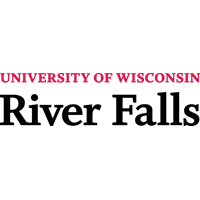Below is a summary of the abstract you submitted. Presenting author(s) is shown in bold.
If any changes need to be made, you can modify the abstract or change the authors.
You can also download a .docx version of this abstract.
If there are any problems, please email Dan at dar78@pitt.edu and he'll take care of them!
This abstract was last modified on May 3, 2019 at 10:59 p.m..

UWRF phage hunters explored the relationships between phages isolated in different host species. We used Microbacterium foliorum NRRL B-24224 SEA and Microbacterium paraoxydans NRRL B-14843, and also Arthrobacter globiformis B-2979. Each soil sample was tested on all three hosts. From 53 samples, we isolated 49 phages – 13 on M. foliorum, 23 on M. paraoxydans, and 13 on A. globiformis. The genomes of 5 phages were sequenced: WaterT, LeeroyJenkins, and Tyrumbra from M. paraoxydans, and Vibaki and Qui from A. globiformis. We identified an additional three phages genomes so far in a DOGEMS sample, including Hubbs (M. foliorum), RubyRalph (M. paraoxydans), and Shoya (A. globiformis). We observed a variety of relationships between these phages and others isolated on various species of Microbacterium and Arthrobacter. Tyrumbra, Hubbs, and RubyRalph have sufficient nucleotide similarity with other phages to be assigned to clusters. Tyrumbra is in cluster EC, Hubbs is in cluster ED1, and RubyRalph is in cluster EG. These three clusters include phages isolated on both M. foliorum and M. paraoxydans. WaterT and LeeroyJenkins had no nucleotide similarity to other phages, but together they formed new cluster GB. They share 96% nucleotide identify over 78% of their genomes, and 62.5% gene content similarity. These phage genomes are 61,090-62,439 bp long, with 1545-1807 direct terminal repeats. Their overall genome structure is similar to the cluster ED1 phages, but they share only 2 phams. The A. globiformis phages are all Singletons, but are related to phages in existing clusters. Shoya shares 25.5% gene content similarity with cluster FB phages and 27.5% similarity with Maja, another Singleton. Shoya is the only temperate phage that we found, and we are isolating lysogens to conduct immunity testing with other Arthrobacter phages. Vibaki shares 24-26% gene content similarity with the cluster AO phages, and has a similar Myoviral morphology. Qui shares about 20% gene content similarity with cluster AM and AU phages. It has a prolate head, like the AM phages, but its head is much longer, 150 nm long and 50 nm wide. Its genome is 113,655 bp, compared to 58,000-59,000 for the AM and AU phages. Qui also shares 12-20% gene content similarity with a large group of phages from different hosts, including clusters AW, BI, CC, DJ, and EL. These phages all have low G+C% content, several genes encoding membrane proteins, and many intergenic repeat sequences. There are several pairs of tandemly repeated genes in Qui’s genome, not found in the other phages. In addition, many Qui genes have blastp hits to other genes in the Qui genome, with e values of <10-4, suggesting a history of gene duplication and divergence. These observations suggest gene duplication as one possible mechanism for the expansion of the Qui genome relative to related phages.


